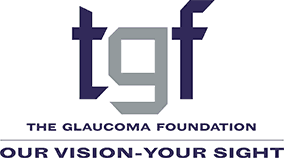Diagnosing Glaucoma
Your eye doctor has a variety of diagnostic tools which aid in determining whether or not you have glaucoma — even before you have any symptoms. Let us explore these tools and what they do.
The Tonometer
The tonometer measures the pressure in your eye. Your doctor places a numbing eye drop in your eye. Then you sit at a slit-lamp, resting your chin and forehead on a support that keeps your head steady. The lamp, which lets your doctor see a magnified view of your eye, is moved forward until the tonometer, a plastic prism, barely touches the cornea to measure your Intraocular Pressure (IOP). The test is quick, easy and painless.
The Pachymeter
The pachymeter measures central corneal thickness (CCT). Like the tonometer, your doctor will first anesthetize your eyes. Then a small probe will be placed perpendicular to the central cornea.
CCT is an important measure and helps your eye doctor interpret your IOP levels. Some people with thin central corneal thickness will have pressures that are actually higher than when measured by tonometry. Likewise, those with thick CCT will have a true IOP that is lower than that measured. Measuring your central corneal thickness is also important since recent studies have found that thin CCT is a strong predictor of developing glaucoma in patients with high IOP.
Visual Field Test
The visual field test is an important measure of the extent of damage to your optic nerve. In glaucoma, it is the peripheral (side) vision that is most commonly affected first. Testing your visual field lets your doctor know if peripheral vision is being lost.
In computerized visual field testing you will be asked to place your chin on a stand which appears before a concave computerized screen. Whenever you see a flash of light appear, you press a buzzer. At the end of this test, your doctor will receive a printout of your field of vision. Software has been developed to help your doctor analyze these tests as well as monitor progression of visual field and peripheral vision loss over successive tests.
Ophthalmoscopy
Using an instrument called an ophthalmoscope, your eye doctor can look directly through the pupil at the optic nerve. Its color and appearance can indicate whether or not damage from glaucoma is present and how extensive it is. This technique remains important in diagnosing and monitoring glaucoma.
Imaging Technology
There have been significant advances in the highly sophisticated image analysis systems now available to evaluate the optic nerve and retinal nerve fiber layer, the areas of the eye damaged by glaucoma. These devices include scanning laser tomography (e.g. HRT), laser polarimetry (e.g. GDX), and ocular coherence tomography. These instruments can help your doctor by giving a quantitative measure of the anatomical structures in the eye. Photographs of the optic nerve can also be useful to follow the progression of damage over time. Large databases have been established to compare an individual’s anatomic structures to those of other patients in the same age group. This software and technology are developing rapidly and show great promise. However, they have not yet evolved to replace ophthalmoscopy, where the doctor looks directly at the optic nerve.
Gonioscopy
Your doctor may perform a gonioscopy to closely examine the trabecular meshwork and the angle where fluid drains out of the eye. After dilating and numbing the eye with anesthetic eye drops, the doctor places a special type of hand-held contact lens, with mirrors inside, on the eye. The mirrors enable the doctor to view the interior of the eye from different directions. In this procedure, the doctor can determine whether the angle is open or narrow. Individuals with narrow angles have an increased risk for a sudden closure of the angle, which can cause an acute glaucoma attack. Gonioscopy can also determine if anything, such as abnormal blood vessels or excessive pigment, might be blocking the drainage of the aqueous humor out of the eye.
